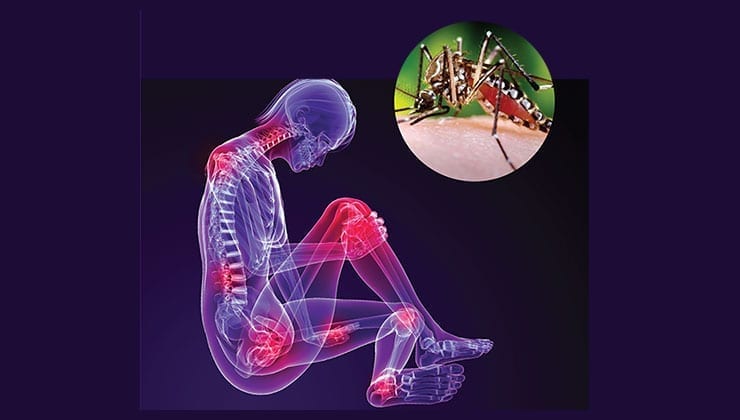For the first time, University of Texas Medical Branch at Galveston researchers were able to predict further adaptations of the chikungunya virus that recently spread from Africa to several continents that will likely result in even more efficient transmission and infection of more people by this virus strain.
A key factor in a viruses’ potential to sustain its circulation and ultimately cause disease is its ability to adapt to new host environments. The number and complexity of these adaptations is shaped by how hospitable the new host is to a certain virus.
Since 2005, 1 in 1,000 chikungunya virus infections has resulted in a fatal disease. “A typical infection involves very severe arthritic symptoms, leaving the sufferer severely afflicted by pain to the point where people can’t work or function normally,” said UTMB professor Scott Weaver, lead author of this paper that will be published in Nature Communications. “Chikungunya continues to be a major threat to public health around the world.”
A UTMB team previously found that a recently emerged lineage strain of the chikungunya virus has adapted itself to be hosted by not only the Aedes aegypti mosquito that lives mainly in the tropics but also to the Asian tiger mosquito, A. albopictus, which can currently be found on all continents except Antarctica. This mutation in the Indian Ocean lineage occurred through a single adaptive change in the virus’ genetic code that alters one protein in the envelope surrounding the virus.
Their newest investigation analyzed recent events in chikungunya virus evolution that will aid in predicting future trends in transmission and circulation that determine epidemic potential. Weaver and his team found that the initial adaption provided the framework for a second wave of adaptations that can enable rapid diversification of viral strains and even more efficient transmission to people. In addition, analysis of the chikungunya virus strain expressing a combination of the second-wave adaptive mutations revealed a similar pattern of changes and heightened adaptive qualities suggesting the future emergence of even higher transmission efficiency.
The researchers concluded that the Indian Ocean lineage of chikungunya virus that has spread to the Indian Ocean Basin, Southeast Asia, Oceania and Europe continues to mutate and adapt to develop higher efficiency for transmission by the Asian tiger mosquito.
“Although a different chikungunya virus strain from the Asian lineage is now circulating in the Americas, the introduction of the Indian Ocean lineage could put temperate regions where A. albopictus thrives at risk for expansion of epidemic circulation,” Weaver cautioned.
Source: University of Texas Medical Branch at Galveston, adapted.



